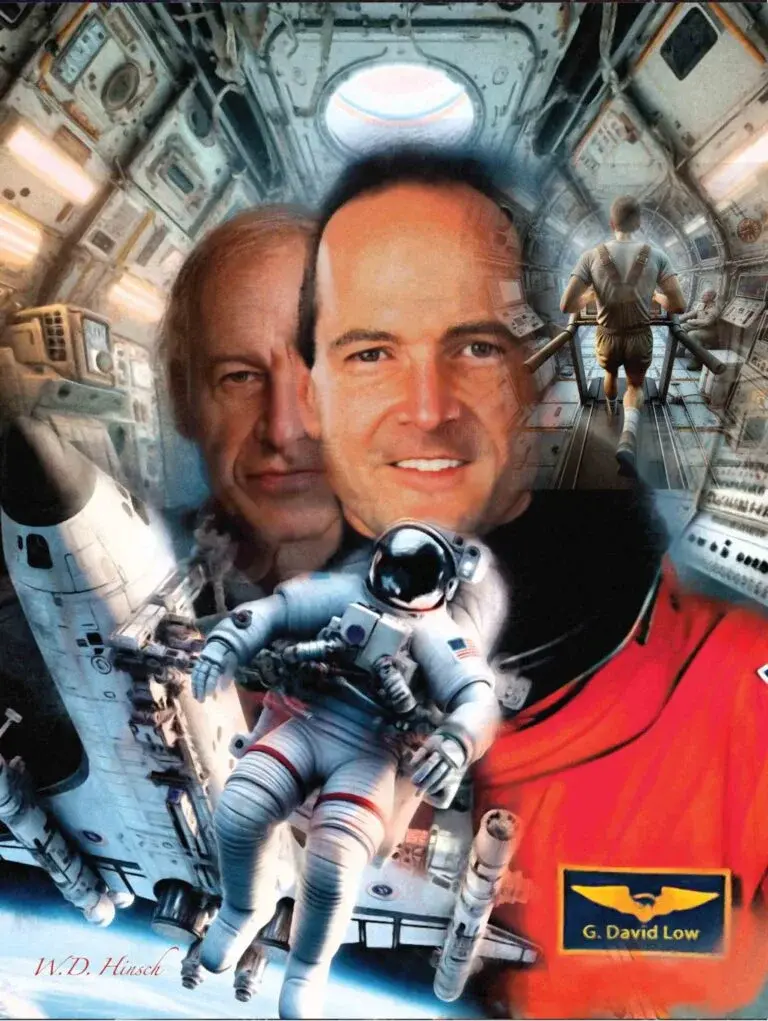
G. David Low
By William D.Hinsch
G. David Low
“In a life intertwined with the stars, G. David Low transformed from a son of NASA’s ‘ultimate engineer’ to
a pioneering astronaut himself. Navigating his journey from academic brilliance to spaceflight ingenuity, Low’s legacy orbits
not just around his own stellar achievements but also in inspiring future voyages beyond our world. His story, a testament to
curiosity and dedication, reminds us that the cosmos is not just a frontier to explore,
but a legacy to uphold.”
G. David Low, born in Cleveland in 1956, was not just an astronaut but a legacy within NASA, his life a testament to intellectual curiosity and the relentless pursuit of exploration. Son of George M. Low, NASA’s deputy administrator and a pivotal figure in the Apollo lunar missions, David’s proximity to the heart of space exploration undoubtedly shaped his path, though he acknowledged his passion for space might have ignited independently.
After graduating from Langley High School in 1974, Low’s academic journey led him through Washington and Lee University and Cornell University, where he honed his skills in physics, engineering, and mechanical engineering. His early career at the Jet Propulsion Laboratory saw him contributing to significant planetary missions, including the Mars Observer and the Galileo spacecraft, destined for Jupiter.
His dedication to expanding human knowledge of space led him to Stanford University, where he earned a Master of Science in aeronautics and astronautics. In 1984, NASA recognized his potential and selected him from thousands of hopefuls to join the astronaut corps. Despite the daunting wait to space, Low’s enthusiasm remained undimmed, and he immersed himself in various technical roles within NASA, from working on the Canadarm to serving as a spacecraft communicator.

